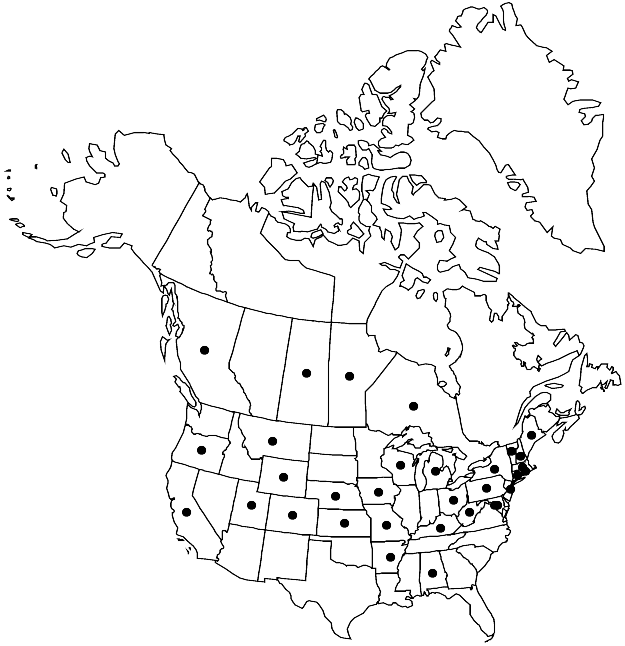Reseda lutea
Sp. Pl. 1: 449. 1753.
Plants annual or perennial, 30–80 cm, glabrous, papillose-scabrid, or hirtellous. Stems erect or ascendent, branched. Leaves: blade obovate, 4–10 × 1–2.5 cm, margins entire or ternately to biternately lobed (lobes 1–3 pairs, narrow-oblong or lanceolate-linear, margins flat or repand), surfaces scabrous or glabrous. Racemes 10–20(–50) cm; bracts caducous, oblong-linear, 2–4 mm. Pedicels 3–7 mm. Flowers (rarely polygamous); sepals persistent or tardily deciduous, (5–)6, not reflexed in fruit, linear-oblong, 3–4 mm; petals (5–)6, yellow, 2–5 mm, rounded-clawed, adaxial ones trisect, lateral lobes semilunate or falcate, margins entire or incised; stamens (12–)14–18; filaments deciduous, 1.5–3 mm, scabrid-papillose; intrastaminal nectary-discs pilose; anthers 0.9–1.5 mm; placenta entire. Capsules usually erect, 3-carpelled, cylindric or ovoid to subglobose, 7–15 × 4–6 mm, apically 3-toothed, glabrous or papillose, ribs scabrid. Seeds 1.4–2 mm, glossy, smooth (carunculate). 2n = 48.
Phenology: Flowering (Apr-)May–Sep.
Habitat: Grasslands, pastures, gravelly or shaley slopes, railroads, roadsides, mortared crevices in stone walls, disturbed areas, ballast ground, agricultural fields, usually on basic soils
Elevation: 0-1500 (-2500) m
Distribution

B.C., Man., Ont., Sask., Ala., Ark., Calif., Colo., Conn., D.C., Iowa, Kans., Ky., Maine, Md., Mass., Mich., Mo., Mont., Nebr., N.H., N.J., N.Y., Ohio, Oreg., Pa., R.I., Utah, Vt., W.Va., Wis., Wyo., Europe, sw Asia, n Africa, introduced also in South America, c Asia, s Africa, Australia.
Discussion
In Australia, Reseda lutea is considered an invasive introduction that causes damage to crops; research is being carried on for means to control its expansion. It has been used as a dye plant, to a lesser extent than R. luteola. It has been found to have antibacterial activity against some pathogens. There is also potential utility for phytoremediation in soils contaminated with copper.